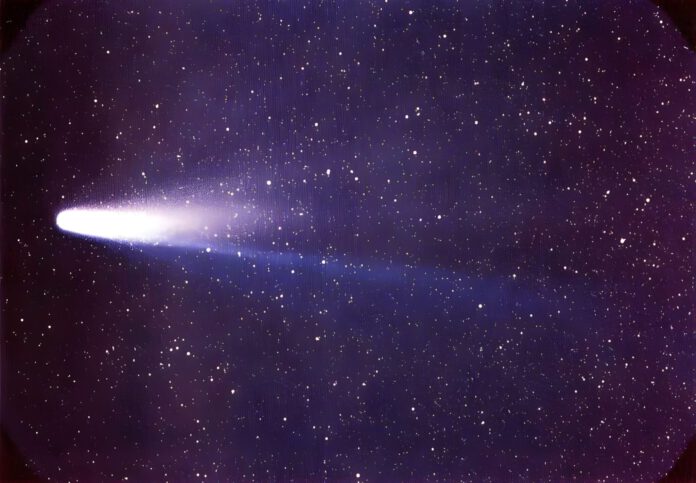
Mark Your Calendars for 2061: Halley’s Comet is Coming!
Were you born in the eighties of the last century or after? If so, mark the year 2061 in your calendar because Halley’s Comet is heading our way! Yesterday, Halley’s Comet reached its aphelion, the furthest point in its orbit around the sun. This means the famous comet is now heading towards the sun, and inevitably towards the earth. However, we’re going to have to wait a while – the comet will only become visible again in 38 years.
A Once-In-A-Lifetime Celestial Spectacle
Halley’s Comet completes one orbit around the sun every 74 to 79 years. This makes it a figurative marvel; most people only get to witness this comet once in their lifetime. In 1910, the comet passed merely 22.4 million kilometers from the earth and was clearly visible. That was also the first occasion when the comet was photographed.
The Last Time Halley Paid Us a Visit
In 1986, the comet last visited the inner part of the solar system and reached its perihelium, the point closest to the sun. Unfortunately, the celestial body was scarcely visible that year, as the distance to Earth was well over 63 million kilometers.
What to Expect in 2061
Astronomers predict that, in the months following its next perihelium (July 28, 2061), the comet will be visible to the naked eye and roughly as bright as Sirius, the brightest star in our night sky.
Current Distance of Halley’s Comet
At present, Halley’s Comet is over 5.2 billion kilometers away from our sun. For comparison, the sun is “only” approximately 760 million kilometers from Neptune. We can’t confirm this with absolute certainty, as Halley hasn’t been photographed since 2003. Measuring 16 by 8 kilometers in size, it’s relatively small and therefore extremely challenging to capture in photos. Currently, perhaps only the James Webb Telescope has the capacity to spot this distant comet.
A Bright Future for Comet Enthusiasts
Enthusiasts will have to be patient. But the good news is that in the meantime, there will be plenty of opportunities to marvel at other comets. For instance, Comet C/2023 will make its first solar orbit in 80,000 years next year, and it may be visible to the naked eye – provided it doesn’t disintegrate, of course.











